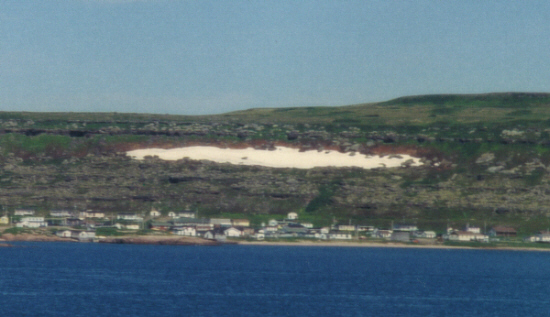For the last two million years or so, large parts of the northern hemisphere, all of Antarctica and many mountain chains on other continents have been covered and recovered by ice sheets. The surface of most of Canada has been shaped by the advancing and retreating of these glaciers. Most of Great Lakes’ basins of and other Canadian lakes both large and small were carved out by the moving ice. Soil and rocks were scooped off the Canadian Shield and deposited over southern parts such as Toronto.
Many causes have been suggested for the Pleistocene Glaciation and others earlier in our planet’s history including: changes in solar flux; changes in the shape of Earth’s orbit & the tilt its axis; the massing of the continents and deep oceanic currents. Probably it was a combination of several such influences.
North America’s continental ice sheet apparently started in Labrador or Ungava then spread south in the east and west in the north. Other ice sheets grew from the coalescing of mountain glaciers in the west and in the Arctic. We may be closer to new continental ice sheets than we think. The picture below was taken in July 1995 along the south coast of Labrador. There are many such ice fields in that area. What would it take for these small ice fields to join and grow into a glacier covering Labrador and Quebec? Whenever a combination of cold climate and sufficient precipitation in the form of snow occurs, as it has several times in the past few million years and in the more distant past, continental glaciers form and grow.

Continue series on Toronto’ Ice Age with next page Don Valley Brickworks Park
Other Pages in this Series
- Don Valley Brickworks Park, The North Slope
- Maximum Extent of the Ice Sheets
- The Story from The Lakes
- The Story of the Trees
- Early Stages of the Retreat of the Ice Front
- Drumlins and Flutings
- Lake Iroquois
- The Wide Valley of the Lower Don
Geology References
Botts, Lee & Krushelnicki, Bruce “The Great Lakes Atlas, an Environmental Atlas and Resource Book” Environment Canada, US Environmental Protection Agency, Brock University,Northwestern University 1988
_Byrne, A. R. & Finlayson, W. D. _“Report on Investigations at Crawford Lake” ROM manuscript 1975Chapman & Putnam, “The Physiography of Southern Ontario”
Coleman, A. P. “The Pleistocene of the Toronto Region” Ontario Dept. Of Mines Vol. XLI, Part VII, 1932
Coleman, A. P. & Parks, W. A. ‘Elementary Geology” J. M. Dent & Sons Ltd. 1930
Erickson, Jon “Ice Ages Past and Future” Blue Ridge Summit 1948
Eyles, Nick & Clinton, Laura “Toronto Rocks, The Geological Legacy of the Toronto Region” U of T Scarborough. 1998
Freeman, E. B. & Rabazo, A. “Toronto’s Geological Past ,an Introduction” MNR leaflet 1975
Geology of Ontario, OGS Special Volume 4
International Geological Congress 1972 - Field Excursion A43 & A42 McAndrews, J. H.;
Sharp, R.P. “Living Ice: Understanding Ice and Glaciation” Cambridge University Press, 1988
